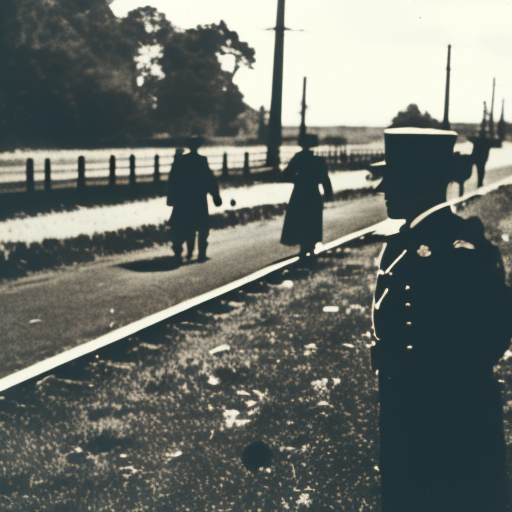Summary:
The Overland Campaign was a series of battles fought between the Union Army of the Potomac, commanded by General Ulysses S. Grant, and the Confederate Army of Northern Virginia, led by General Robert E. Lee, during the American Civil War. The campaign took place from May to June 1864 in Virginia and marked a turning point in the war.
Battle of the Wilderness:
The campaign began with the Battle of the Wilderness on May 5, 1864. The dense forest and undergrowth of the Wilderness provided a challenging battlefield. Despite heavy casualties, Grant continued to push forward, aiming to engage Lee’s army and prevent them from retreating.
Battle of Spotsylvania Court House:
After the inconclusive Battle of the Wilderness, the armies clashed again at Spotsylvania Court House. The battle lasted from May 8 to May 21, 1864, and was marked by intense fighting and brutal hand-to-hand combat. Grant attempted to break through Lee’s defensive lines but was unsuccessful. The battle resulted in heavy casualties on both sides.
Battle of North Anna:
Following the Battle of Spotsylvania Court House, the armies moved to the North Anna River. Grant attempted to flank Lee’s army, but Lee was able to repel the Union forces. The battle took place from May 23 to May 26, 1864, and ended inconclusively.
Battle of Cold Harbor:
The next major battle of the Overland Campaign was the Battle of Cold Harbor, fought from May 31 to June 12, 1864. Grant launched a frontal assault on Lee’s entrenched positions, resulting in heavy Union casualties. The battle is known for its high casualty rates and Grant’s decision to continue the assault despite the heavy losses.
Siege of Petersburg:
After the Battle of Cold Harbor, Grant shifted his strategy and decided to lay siege to Petersburg, a vital supply center for the Confederacy. The siege began on June 15, 1864, and lasted for nearly ten months. The Union forces continuously attempted to break through the Confederate defenses but were unsuccessful until April 1865.
Impact and Significance:
The Overland Campaign was a turning point in the American Civil War. Despite heavy casualties, Grant’s relentless pursuit of Lee’s army forced them into a defensive position. The campaign demonstrated Grant’s determination and willingness to engage in aggressive warfare. It also highlighted the resilience of Lee and his ability to defend against superior numbers.
The Overland Campaign marked the transition from the war of maneuver to the war of attrition. Grant’s strategy of continuously engaging Lee’s army and wearing them down through relentless attacks foreshadowed the tactics that would be employed in the later stages of the war.
The campaign also had a significant impact on the morale of both the Union and Confederate armies. The heavy casualties suffered by the Union forces tested their resolve, but Grant’s determination to press forward boosted their morale. On the Confederate side, the relentless Union attacks and heavy losses took a toll on the soldiers’ morale and highlighted the challenges they faced in defending their cause.
Overall, the Overland Campaign was a grueling and costly series of battles that showcased the determination and resilience of both the Union and Confederate armies. It marked a turning point in the war and set the stage for the eventual Union victory.












